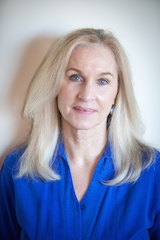Judy is the Director and Founder of the Center for Movement Education and Research (CMER), a 501c 3 non-profit organization (2003). From 2005-2016 she directed the CMER Dance/Movement Therapy Alternate Route Training program. She continues as an international movement specialist, dancer, teacher, with over 38 years of academic work. From 1982-2005 Judy was an Associate Adjunct Professor at UCLA in the department of Dance, World Arts & Cultures with focus on Laban Movement Analysis, dance anatomy/kinesiology and creative dance/movement education. Judy’s teaching in the United States includes the University of California, Los Angeles, University of Southern California, Dominican University, University of Washington, University of Illinois, Sonoma State University, and the University of Western Michigan. Internationally, she has taught Laban Movement Analysis at the University of Limerick in Ireland, and dance therapy programs in S. Korea, Moscow Russia and Embodied Leadership in Beijing China and Germany.
Judy has a broad perspective of the role of dance/movement in healing and education. Her article in the Somatic Journal, Cultivating Body Knowledge, received a first award placement by the professional/post-certification Laban organization, Motus Humanus.
Her current creative work includes Embodied Leadership Training, The MAP journey and Movement for Equanimity (MFE). Her myofascial movement practice (MFE) is based on studies with Karin Gurtner from Switzerland. Judy divides her time living in California, USA and Coromandel, NZ.
As a dancer I value creativity and expression; I strive to lead with clarity, empathy and the power to invoke personal exploration in others.
“I am interested in helping others discover the power and meaning that comes from living an embodied life. I firmly believe that conscious embodiment is the balance to 21st technology. Dance is a source for integrating social/cultural awareness and emotional intelligence when guided with somatic awareness. It is vital to our humanity that we connect to the wisdom within our conscious bodies and become literate in the psychophysical aspects of movement”

